
Workplace Dampness and Associated Hazards
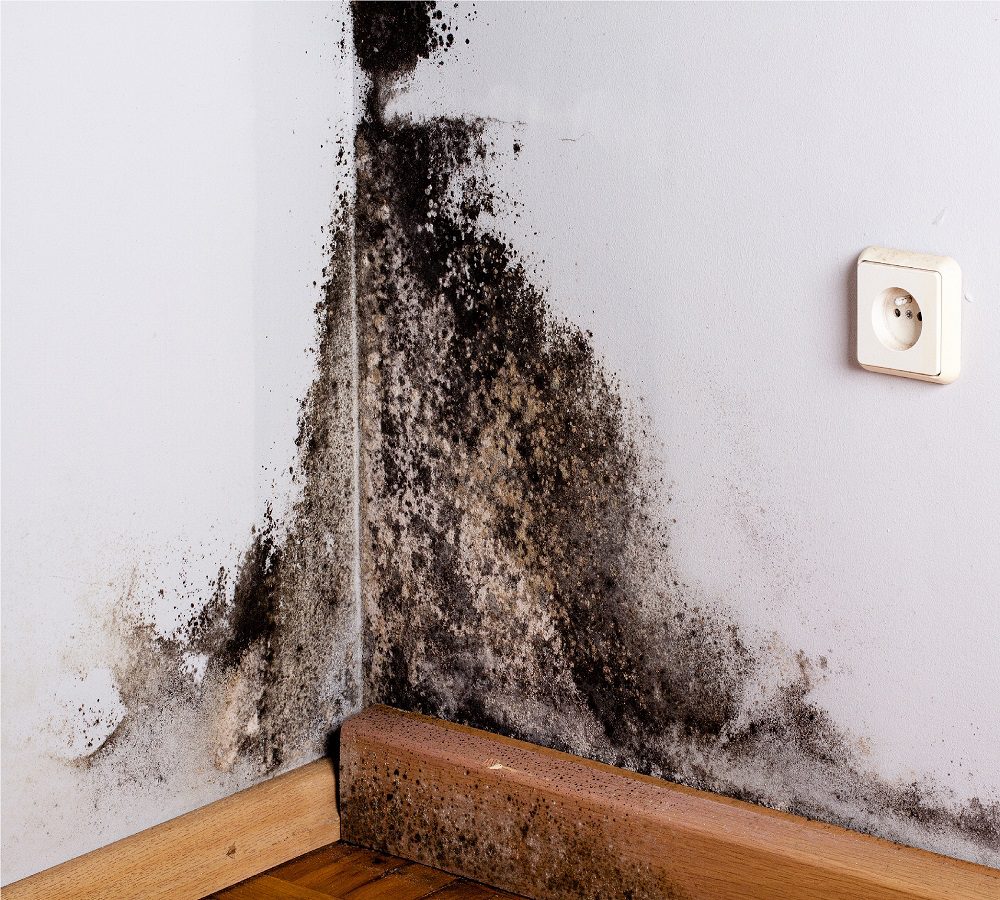
Written by: Virginia McCormick, NES, Inc.
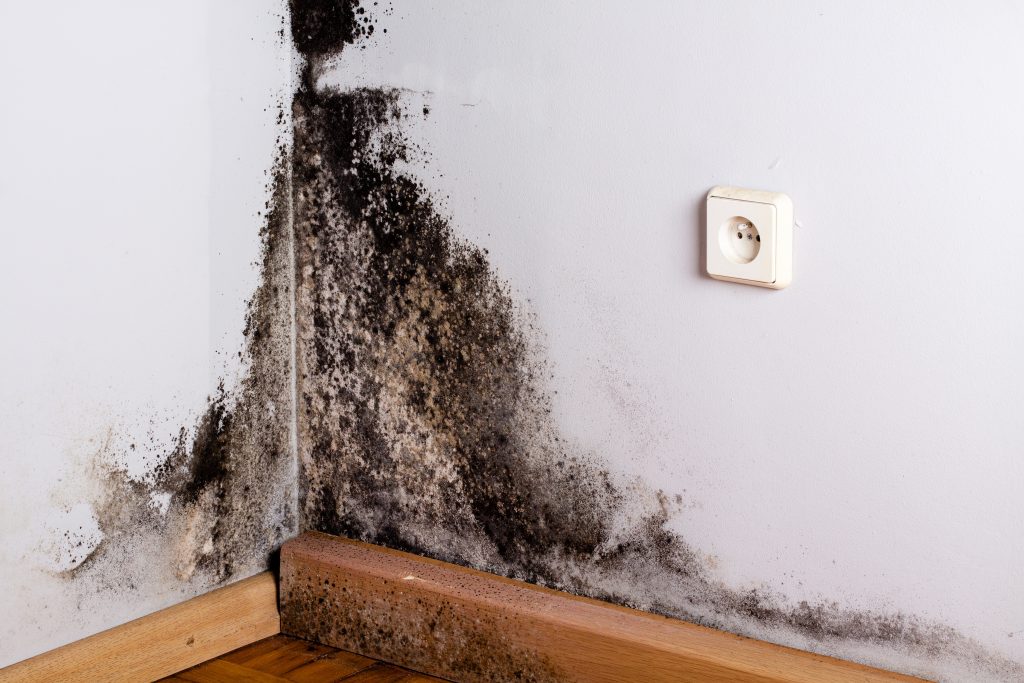
Workplace dampness can cause serious issues, such as mold, that employers should be watching for.
Workplace Dampness a Concern After Winter Storms
As California nears the close of a notably wet winter, workplace dampness can become a concern for both employers and employees. According to the Centers for Disease Control and Prevention (CDC), people who spend time in damp buildings are more likely to report health problems such as respiratory infections, development or worsening of asthma, and bronchitis.
While internal sources of dampness, such as leaking pipes, can occur at any time in the year, external sources like the recent rainwater can result in an increased risk of workplace dampness. Other common sources of workplace dampness include leaky roofs, sprinkler spray, or even condensation. Dampness can become a problem when materials in the workplace become wet for extended periods of time, bringing on a variety of associated hazards, including mold growth.
NES’ team of industrial hygiene professionals are skilled in conducting professional, cost-effective solutions, including workplace assessments. For more information on our industrial hygiene services, click here.
Mold: The Heavy Hitter of Workplace Dampness
The most commonly known risk associated with workplace dampness is mold growth. In a 2013 brief guide on mold in the workplace, OSHA states that workplace dampness and associated mold growth is a hazard to worker health and can also cause damage to building materials, furnishings, and structures.
Mold is everywhere – floating in the air, clinging to the family dog’s fur, and covering many different surfaces. Mold is even suspected as being essentially built-in to some buildings. In a 2016 study, the popular building material gypsum wallboard was hypothesized to be embedded with spores well before being installed. In the study, the spores remained dormant until moisture was introduced, which prompted the spores to begin growing.
While most mold types are relatively harmless to humans, there are a few that can pose considerable issues to worker health. According to CDC, the most common forms of indoor mold are Cladosporium, Penicillium, Aspergillus, and Alternaria. Evidence gathered by the Institute of Medicine has linked indoor exposure to mold with, “upper respiratory tract symptoms, cough, and wheeze in otherwise healthy people; with asthma symptoms in people with asthma; and with hypersensitivity pneumonitis in individuals susceptible to that immune-mediated condition.”
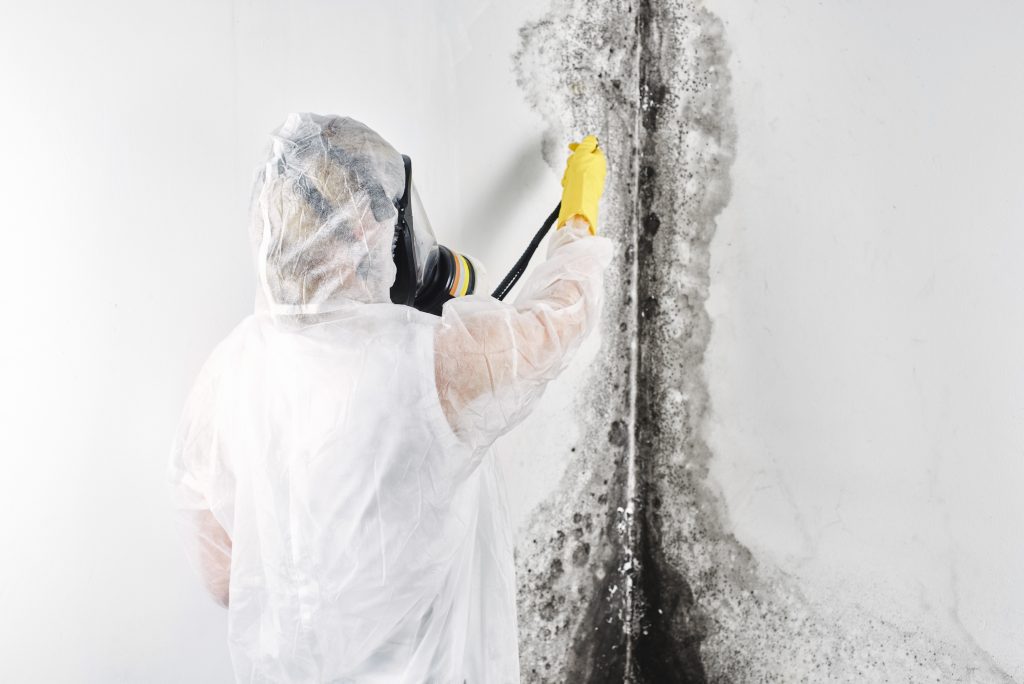
Black mold will make most employers panic. But all molds, regardless of color, should be acted upon swiftly.
Stachybotrys is a particularly well-publicized genus of mold, and the species S. chartarum (sometimes known as S. atra) and S. chlorohalonata are commonly known as “toxic black molds.” A 1993-1994 outbreak of pulmonary hemorrhage in infants in Cleveland, Ohio was initially reported as being due to exposure to black mold. Following an investigation of the incident by the CDC, it is now believed that the mold was not linked to the deaths. However, the initial reporting resulted in a long-lasting black mold panic.
Harmful mold can come in many different colors, and black mold is not always harmful. In fact, there are tens of thousands of mold species, and they come in various sizes, shapes, colors, and textures. It is nearly impossible to identify the type of mold by color alone. If you find mold – black or any other color – the recommended course of action is to remove the mold.
Controlling Mold
While the California Department of Public Health (CDPH) reports that permissible exposure limits for indoor molds cannot currently be established, California employers are required to implement adequate procedures to prevent hazardous indoor air quality, which would include the control of mold and moldy materials to protect the well-being of employees.
If mold exists in the workplace, it is recommended that employers take steps to address it immediately. The best way to control mold growth is to control moisture. Effective control of mold requires both cleaning up the visible mold and fixing the moisture problem. If the moisture problem is not fixed, the mold is likely to return.
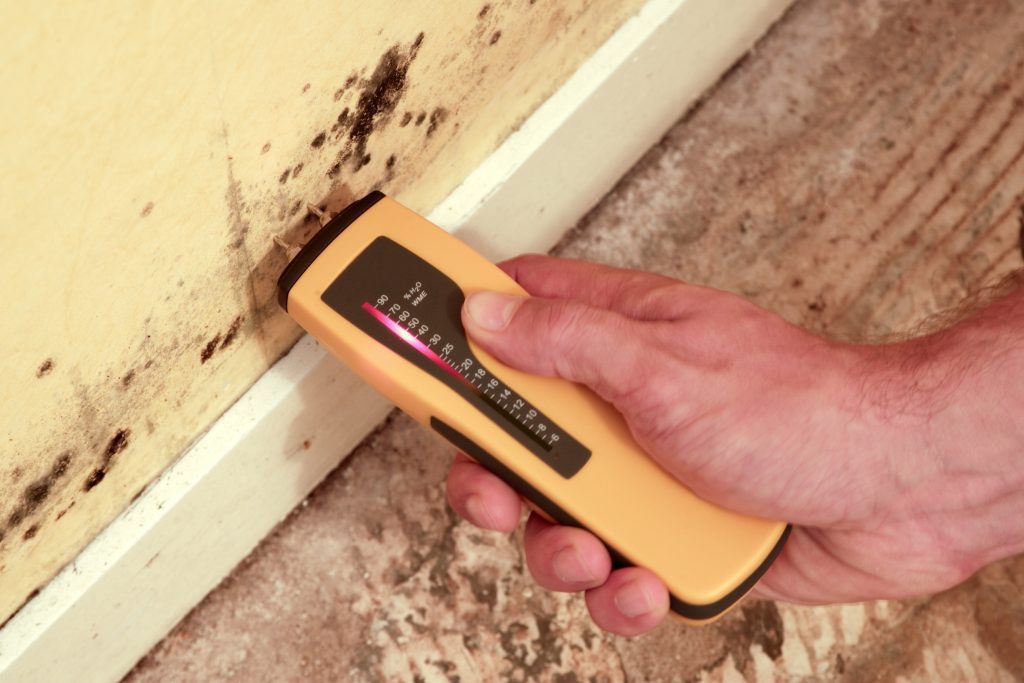
A moisture meter like the one pictured above can be a good way to begin inspecting workplace dampness.
As such, buildings should be regularly inspected, and HVAC systems should be serviced often. Additionally, HVAC systems that are believed to be infected with mold should not be run, as doing so can cause the mold to spread. If you are concerned about mold in your workspace, be sure to alert your employer as soon as possible.
According to the U.S. Environmental Protection Agency (EPA), mold remediation in commercial buildings starts with, “assessing the size of the mold and/or moisture problem and the type of damaged materials.” By starting off with a thorough assessment, employers can begin to develop an effective way to control and remove the mold. When it comes to removing the mold, CDC recommends commercial products, soap and water, or a bleach solution of no more than 1 cup of household laundry bleach in 1 gallon of water. When cleaning mold, open any windows and doors in the area and make sure to use gloves and eye protection.
Remember: never mix bleach with ammonia or other household cleaners. Mixing bleach with ammonia or other cleaning products will produce toxic fumes.
Additional Workplace Dampness Hazards
Along with mold growth, workplace dampness can pose additional hazards. The most common hazards of wet working conditions are slips, trips, and falls. Excessive workplace dampness can also lead to health issues like trench foot or even hypothermia if combined with cold temperatures.
The best ways to prevent these hazards are to ensure proper personal protective equipment is being used, such as boots and raincoats, and that excess water is not left to gather on the floors of common rooms or other high foot-traffic locations.
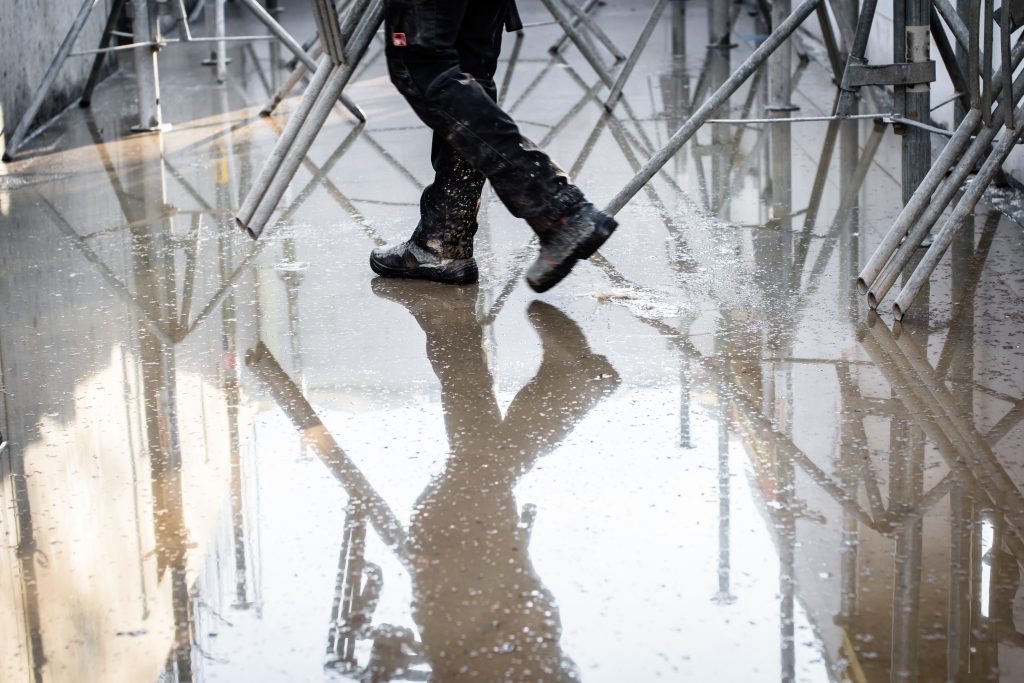
Working in damp conditions comes with an increased risk of slips, trips, and falls. Be sure to use proper protective equipment to stay safe.
Workplace dampness can also take the form of rising damp. Rising damp occurs when ground level moisture travels upwards through the walls. While most workplaces will have barriers installed at the lower level of walls to prevent rising damp, sometimes these barriers can fail, and some older structures may not have barriers at all.
If left untreated, rising damp can cause serious – and costly – structural issues to plaster, paint, and flooring. It can also decrease the effectiveness of insulation, which can lead to higher energy bills and an increased risk of cold-weather illnesses.
How Much Water is Too Much?
The most common type of water damage is typically rain-related. And contrary to popular belief, it does not take a colossal downpour to cause a problem. Even an inch or two of rain is enough to cause workplace dampness if not properly accounted for. In fact, rain in any amount – light, moderate, or heavy – can lead to costly, potentially harmful conditions.
In addition, workplace dampness due to rainfall can be nearly impossible to control entirely. The smallest gaps in building roofs can cause leaks, and even something as innocuous as hanging up a dripping raincoat can cause an uptick of potentially harmful workplace dampness.
With spring on the horizon and a few storms still left to roll through California, the most important consideration for employers is to keep a keen eye out for workplace dampness to ensure the health and safety of themselves and their workers. By striving to combat these conditions as soon as they start to arise, the potential of costly and harmful mold can be decreased, and dampness-related injuries and illnesses can be avoided.
How NES can Help with Workplace Dampness
NES has been providing EH&S and industrial hygiene services on behalf of a wide array of public and private businesses and government agencies for the past 30 years. If you have questions regarding workplace dampness or mold growth cleanup, please contact NES at 916-353-2360 / 800-637-2384 or via email at office@nesglobal.net.
References:
CDC: Indoor Environmental Quality; Dampness and Mold in Buildings
Facts about Stachybotrys chartarum and Other Molds
Update: Pulmonary Hemorrhage/Hemosiderosis Among Infants — Cleveland, Ohio, 1993-1996
OSHA: A Brief Guide to Mold in the Workplace
Wiley Online Library: Pre‐contamination of new gypsum wallboard with potentially harmful fungal species
U.S. Environmental Protection Agency: Mold Remediation in Schools and Commercial Buildings
California Department of Public Health: Indoor Air Quality (IAQ) Section: Mold and dampness
Statement on Building Dampness, Mold, and Health
Cal/OSHA – Policy and Procedure Manual: C-48 Indoor Air Quality
Permagard: How to Treat Rising Damp
